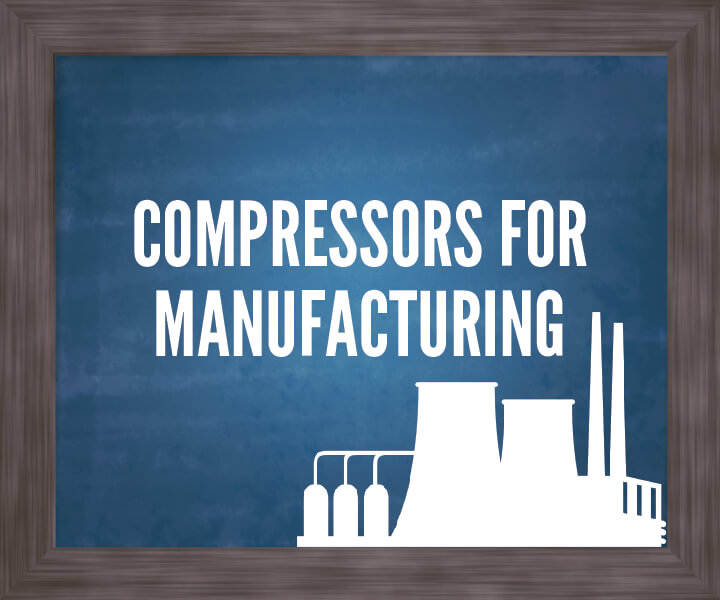TECHNOLOGY
Agriculture
Aerospace
Amusement Parks
Automotive Air Compressors
Breweries
Dry Cleaning
Energy
Food & Beverage
Manufacturing
Manufacturing
Compressors for Manufacturing

The need to develop a stronger method to produce compressed air rose dramatically and around 1,500 B.C., the invention of the bellows, a handheld device that consisted of a flexible bag, which generates a concentrated blast of air, made it possible to achieve higher temperature fires. The handheld bellow later gave way to a foot-controlled device.
German physicist Otto Von Guericke introduced a vacuum pump in 1650, which suctioned the gas from tight compartments and create air-free spaces. In 1762, professional engineer John Smeaton introduced a water wheel-driven blowing cylinder that gradually replaced the bellows. Around 1776, John Wilkinson invented the “blasting machine,” which became the first real archetype for modern-day mechanical air compressors.
Over the years, companies involved in manufacturing air compressors have incorporated other features such as electricity and pneumatic energy into the devices. The use of air compressors to facilitate the movement of large volumes of air through the 8-mile long tunnel constructed for the Italy-France rail system (1857) highlighted the numerous possibilities for the use of air compressors in the industrialized world.
In contemporary society, compressed air has found a place in nearly all fields of industry and commerce, including:
- Primary product industries (suppliers of semi-finished raw materials to manufacturers)
- Heavy goods manufacturers
- Consumer goods processing and packaging
- Transportation
- Construction
- Aerospace
- Automotive
- Cement production